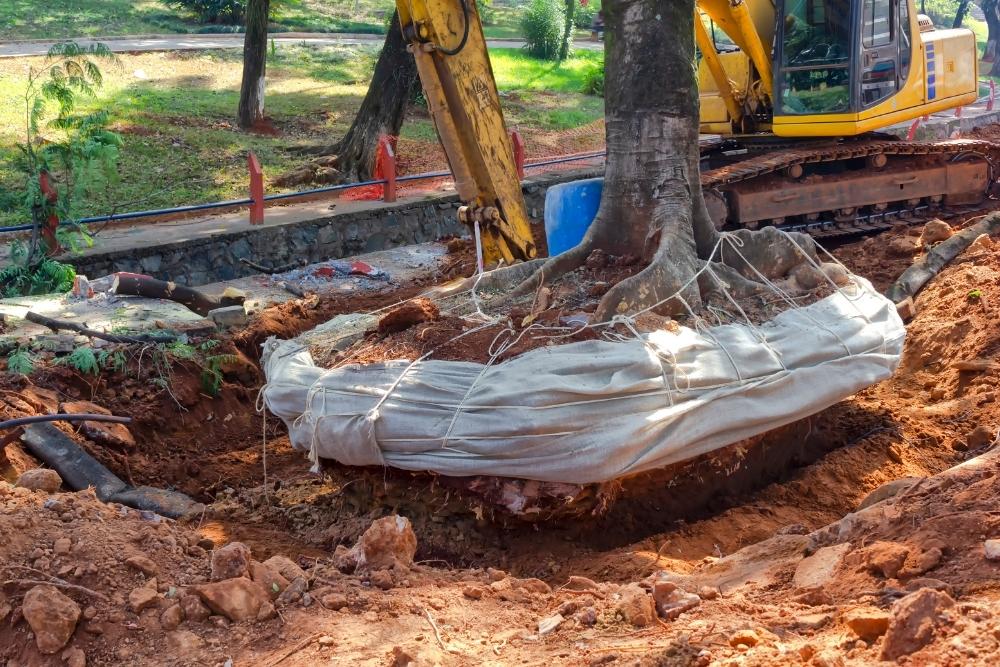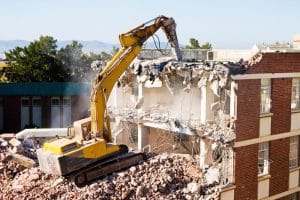Have you ever wondered if Is it illegal to cut down trees on your own property? Cutting down trees isn’t always illegal, but it depends on where you live. In some states, cutting down trees without permission from the landowner is considered trespassing. Is it illegal to cut down trees on your own property?
You should never cut down trees on your private property unless you have permission from the owner. This is because they belong to someone else and you don’t have the right to take them away.
You could also be breaking local laws or ordinances by doing this. If you are unsure about what rights you have to do something, talk to your neighbours or check with your city hall before you begin work. They can help advise you on any rules that might apply in your area.
When removing trees, keep these things in mind:
If you want to use machineries such as chainsaws, felling wedges or other equipment for this job, you will need to get authorisation from your local council.
Some councils only allow certain types of tree removals, while others may require permits or licences. Ask around to find out if you need one.
Do not remove more than 20 per cent of a tree canopy (the outer part) at once. You should chop up your branches into small bits so you can take them one by one.
Always wear safety gear when working. These include gloves, long sleeves, sturdy boots and a hard hat. Make sure all tools and equipment are safe for use.
Use safety devices to prevent yourself from being electrocuted. This includes using ground fault circuit interrupters (GFCI), which measure the current flowing between two points on a power line. GFCI protects against electrical shock because they detect dangerous conditions caused by faulty wiring or damaged cables.
Make sure you plan ahead before starting work. Have everything ready so there won’t be any delays. This means having enough fuel, extra safety gear and plenty of water.
Make sure you know exactly how much wood you are taking, and make sure you estimate it correctly. It doesn’t matter if you underestimate or overestimate the amount of material you are going to remove; you will still need to pay the fee.
The most important thing to remember is to listen to your local authorities before beginning work. You do not want to break any laws or risk fines or even lose your license to operate heavy machinery.
What if I have permission from the land owner?
There are times when landowners give permission to remove trees on their property. For example, many homeowners will let people trim back overgrown bushes or shrubs.
It is important to ask permission before cutting down trees on private land, especially if you intend to sell or harvest the wood.
If you are planning to cut down a large tree, you will need to contact your local council first. They will tell you whether you need permission and what information you need to provide.
They will then issue a permit allowing you to carry out the work. The permit is valid for a specific length of time, usually three months.
If you are removing a tree that has been planted in a public space, like a park or forested area, you will need to obtain permission from the relevant authority.
How long will it take to get a tree removed legally?
Tree removal takes time to complete. Your local council will decide whether you need to come back to remove the stump or roots.
Depending on the size of the tree, it may take several days to remove the stump. However, the process can take longer depending on where the tree was planted and the condition of the soil.
For instance, if the tree was placed in an area with poor drainage, the roots may be difficult to extract. In addition, the soil may be compacted due to repeated watering, making it harder to dig out the roots.
In some cases, the tree needs to be dug out completely. If this is the case, the job may take several weeks to complete.
Once the tree has been removed, the stump should be filled in properly. Depending on its location, it could take up to six months for the hole to fill in naturally.
You should also check that the tree is healthy after the removal. A healthy tree will generally grow back within five years.
If you have concerns about the health of the tree, call your local council.
Can I hire a professional tree remover?
A qualified arborist service can safely remove trees without causing damage to the surrounding environment.
Professional tree removers are trained to handle different situations. Some are experts at pruning, while others specialize in felling.
Some arborists are also certified as storm chasers, meaning they are able to assess wind speeds and determine the best way to avoid damaging powerlines.
When hiring a professional, you can expect them to use safety equipment, such as chainsaws and hydraulic shears.
Some companies offer free quotes, so you don’t have to worry about paying upfront. Once you find a company you like, you can request a written contract.
Do I need insurance to cut down trees?
Yes! Before you start working, you must ensure you have adequate insurance coverage.
Your general liability insurance policy covers accidents caused by your workers, but there are other risks involved in tree removal.
These include:
- falling branches
- damage to vehicles and equipment
- falling debris
- injury to animals
- slips, trips and falls
- fire and smoke inhalation
- damage to buildings
To protect yourself against these risks, you can purchase additional insurance policies. For example, you might want to add protection for motorized vehicle damage, tools and machinery, and personal possessions.
This means you will only pay for any losses once you have made a claim under your insurance policy.
The cost of insuring your business depends on many factors. You can compare insurance options online using our comparison tool.
Can I plant new trees after removing old ones?
It all depends on the type of tree you plan to replace.
Most garden centres sell varieties of trees suitable for planting in areas with good light levels. These include eucalypts, pines, poplars and acacias.
However, when planting a new tree, make sure you choose one that is compatible with the existing landscape.
For example, if you live near water, avoid planting a tree that requires lots of watering.
Planting a tree in a location that receives little sunlight can cause problems. This includes shady spots or areas close to fences.
Another option is to plant deciduous trees. They shed their leaves during winter, allowing more light into the area.
When buying a replacement tree, look for a variety that grows quickly. The quicker it takes to reach maturity, the less time you will have to wait before seeing results.
How much does tree removal cost?
Tree removal costs vary depending on the size of the tree and whether it needs to be removed from private land or public land.
If the tree has been damaged, you may need permission from the relevant authority before cutting it down.
In addition, some states charge an extra fee to remove trees located within urban areas.
You should also factor in the cost of replacing the tree. If you need to buy a new tree, this could increase the overall cost.
What are the benefits of tree removal?
There are several reasons why people decide to hire professionals to remove trees.
- Tree removal saves money. It often costs more to hire a contractor than to do the job yourself.
- A skilled arborist knows how to work safely around power lines and overhead cables.
- Trees create shade, which reduces the amount of heat absorbed by homes and businesses.
- Smaller trees provide better privacy and add character to a home or business.
- Removing trees helps to improve air quality.
- Some trees produce fruit and flowers that attract wildlife.
Before hiring a professional, check they have the right licences and permits. Also, ask for references and read through their terms and conditions.
How long does it take to get a permit?
Some councils require permits to be completed within seven days. Others give contractors up to 30 days.
If you don’t receive a response within the required timeframe, contact the council again.
Make sure the contractor you use has enough experience to handle large jobs.
Ask to see examples of their previous work.
Are there any legal requirements?
Depending on where you live, you may need special permission before you can fall into a tree.
A permit can help ensure safety. In most cases, you won’t need one unless you are planning to climb onto the tree or access its branches.
If you’re unsure about what you need to do, visit your local council website for information.
If you are working on private land, you may need permission to fall a tree. You should check first with the owner.
The Environmental Protection Authority (EPA) provides general guidelines for removing trees.
The EPA recommends:
- Felling a tree using a chainsaw rather than an axe.
- Using a safe method to transport the timber away.
- Noting the location of fallen trees so that they can be picked up at the next rainfall.
What happens after I’ve had a tree removed?
Once the tree stump has been ground out, you can fill the hole with soil or concrete.
This ensures the tree doesn’t return.
If you want to keep the roots intact, then dig them out carefully and replant them.
Also, consider planting a sapling to replace the tree. This will make a big difference to the environment.
If you’d like to learn more about tree removal in Hunter Valley NSW, call us today!



